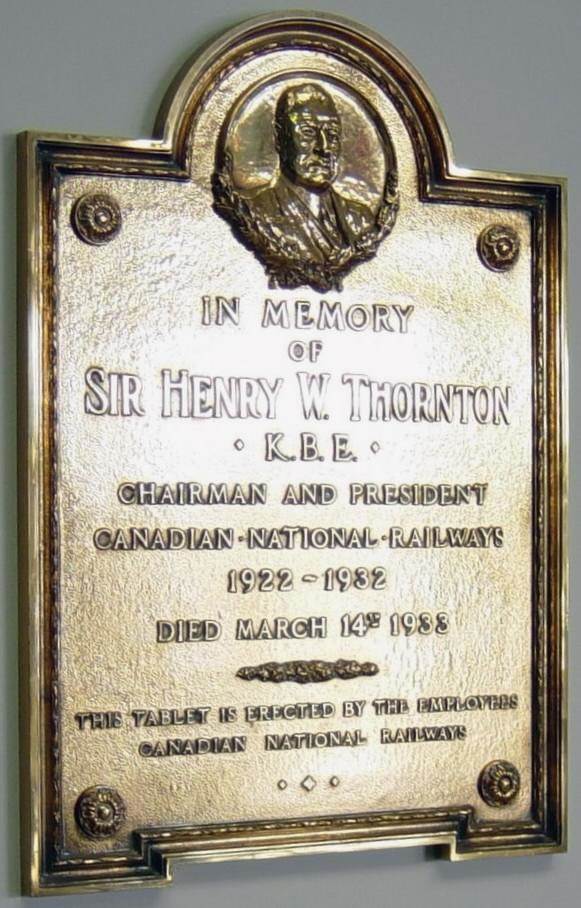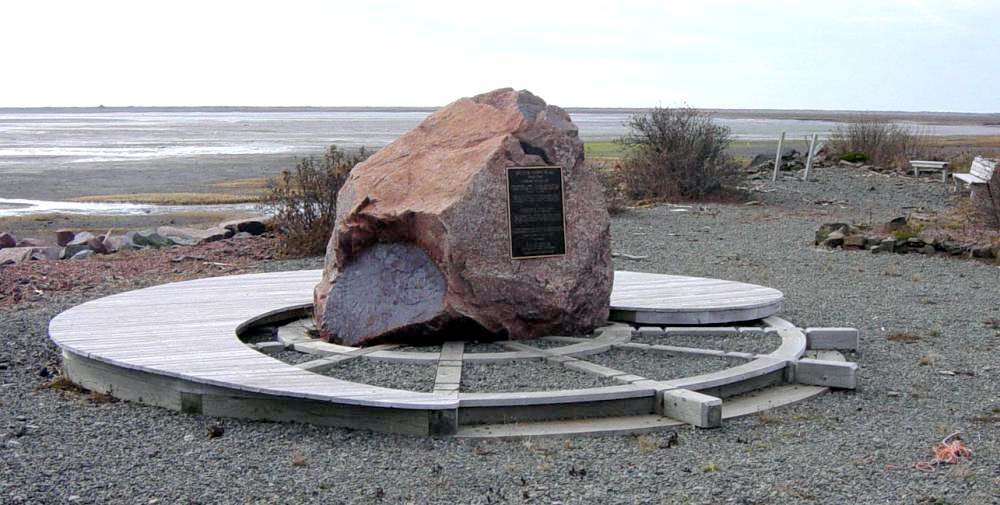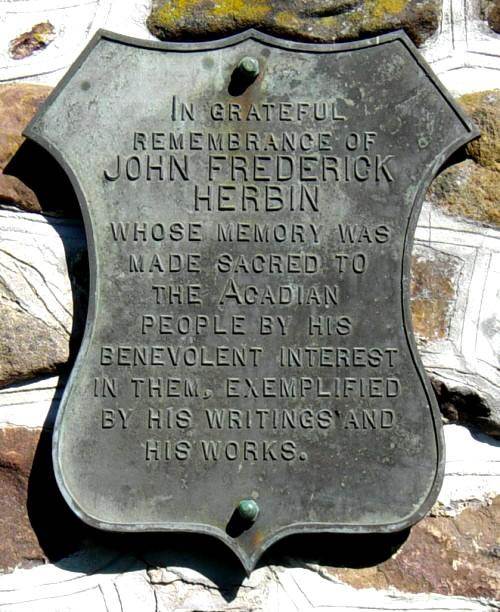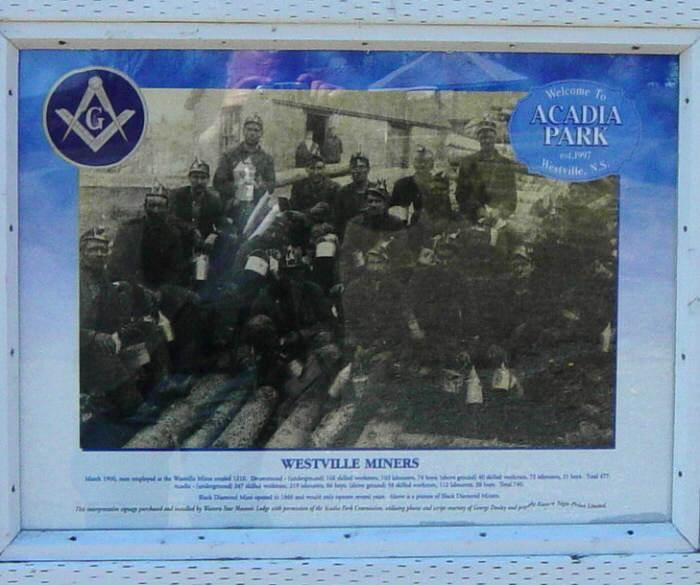
Photographs of
Westville Miners Memorial Monument
To the memory of those who lost their lives
in the Drummond Colliery 13 May 1873
This monument is the oldest and tallest
outside of a cemetery in Nova Scotia.
Officially unveiled 22 October 1891
Westville Pictou County Nova Scotia
Location: Acadia Park in downtown Westville
GPS location: 45°33’27″N 62°42’43″W

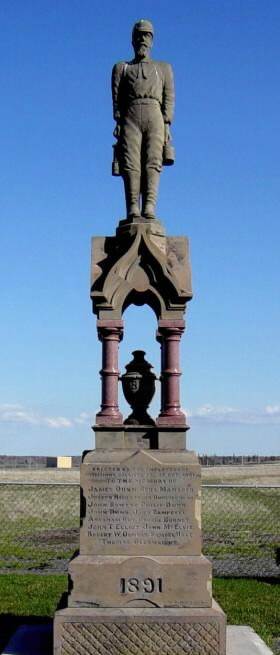 West face
West face
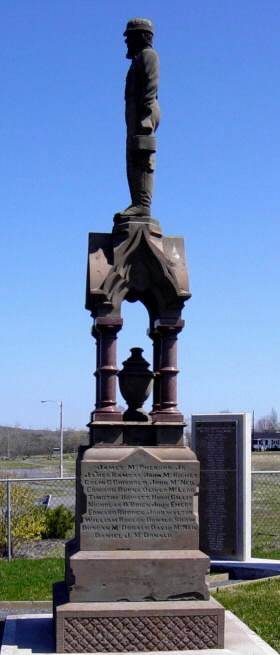 South face
South face
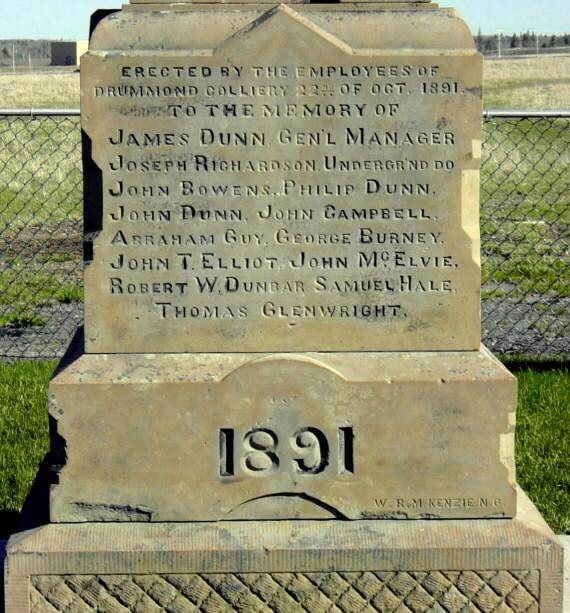 West face
West face
 West face detail
West face detail
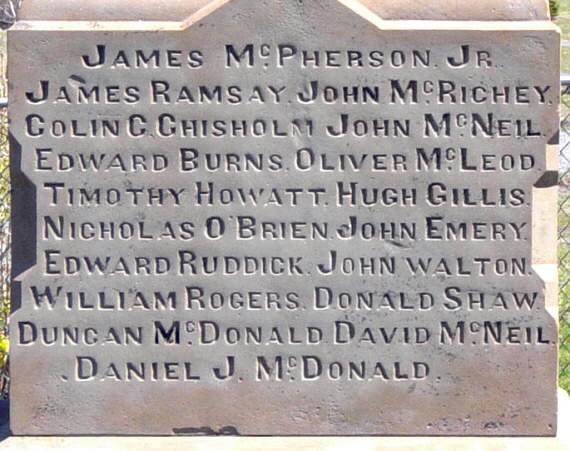 South face
South face
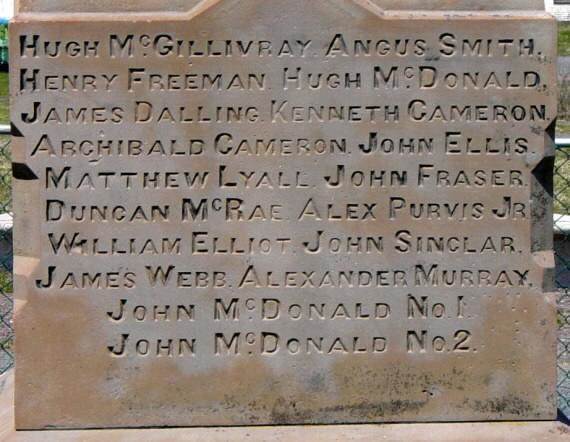 East face
East face
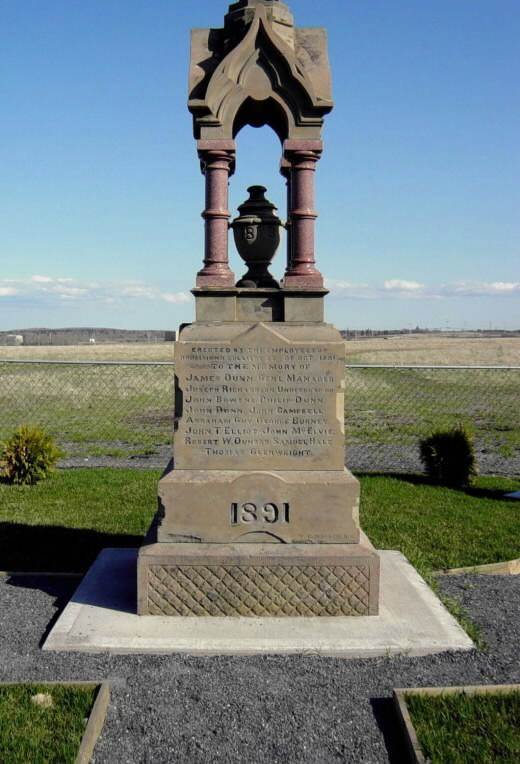 West face
West face
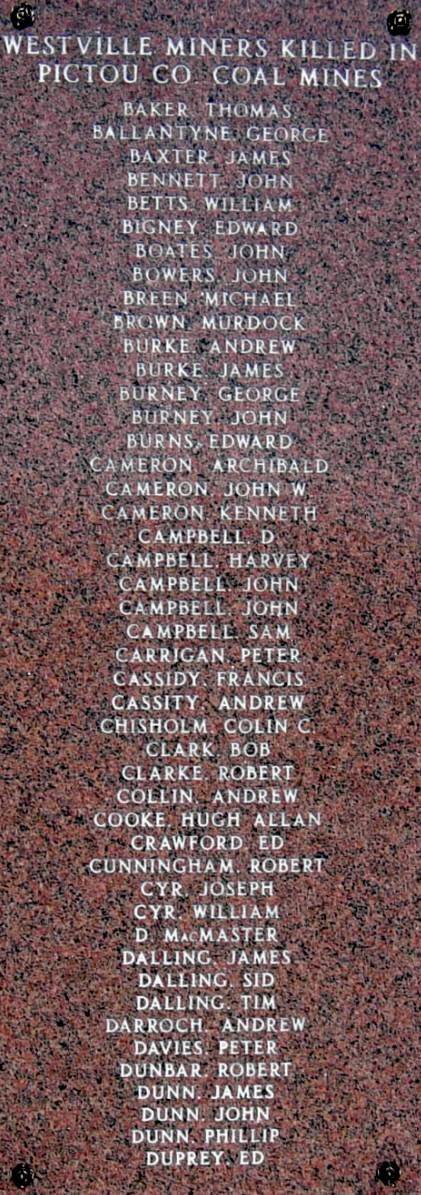



The above photographs were taken on 5 May 2003.
Acadia Park Westville
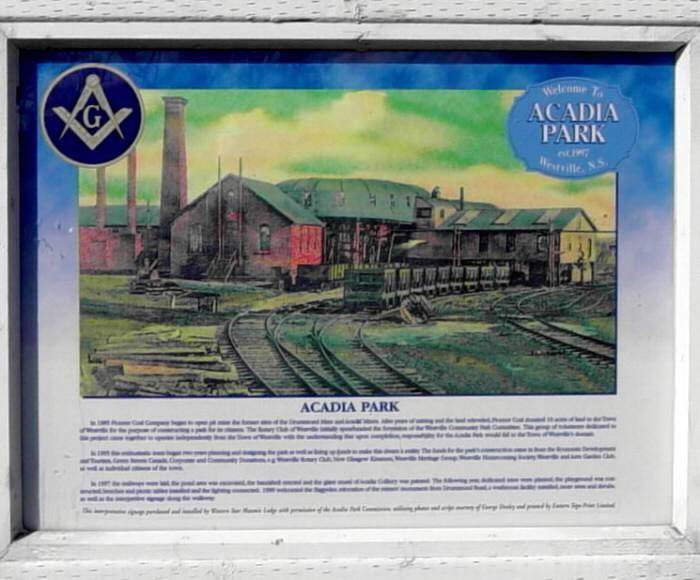
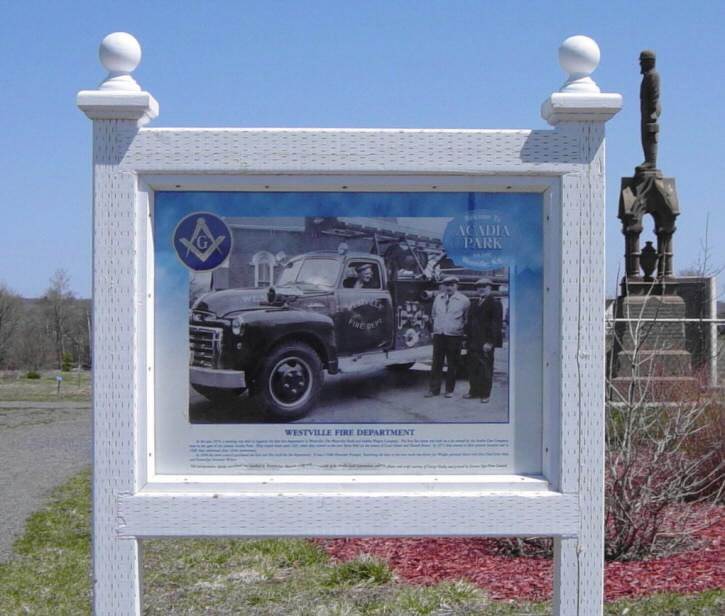


This mural was painted on the back of the Nova Scotia Liquor Commission building
by Colin Cook in 1997. It shows the Acadia Colliery as it looked many years ago.
Acadia Park Town of Westville
http://www.townofwestville.ca/a_park.htm
The above photographs were taken on 5 May 2003.
Westville Miners Memorial
http://www.rootsweb.com/~nspictou/minewest.htm
The Drummond Colliery Disaster 1873 Newspaper clipping, 17 May 1873
http://www.rootsweb.com/~nspictou/mine_drum_pw.htm
Drummond Colliery Explosion 13 May 1873
Nova Scotia Department of Mines Report
http://www.mininghistory.ns.ca/nsdm/dm187306.htm
…
I arrived at the Drummond Colliery about 2p.m. on the 13th inst.
and found dense volumes of smoke issuing from the natural exits
of the mine, precluding the possibility of saving life by means of
those exits. Hearing that cries for help had been heard from the
pumping pit, Mr. Hudson and I went there. On our arrival we found
one man, (James Dunstan) being hauled up in a bucket by manual
power. After which, other two were drawn up. Then four volunteers
descended to prepare the way for larger gangs of men to search for
any who might yet be alive in the mine. Mr. Hudson and I had
determined to explore the pit with the hopes of saving life, and
were waiting for our safety lamps and the report of the volunteer
Burns as to the state of the bottom of the pit, when, as Burns was
being drawn up, one of the most terrific explosions I have ever
seen took place casting up the man and the bucket and
overthrowing the gin and parts about the pit.
“overthrowing the gin” — “gin” means engine, a word that then
was used as a general term meaning any kind of machine.
Here, “overthrowing the gin” means the hoist or winch
was severely damaged.
The plan of the workings which we were studying at the time, was torn
in our hands by the falling debris. After witnessing this explosion and the
subsequent ones, I became convinced that every soul in the mine was
lost, and to pursue further investigation in the mine was utterly useless.
I then consulted with the other mining engineers present, as to the best
and quickest mode of recovering the bodies, extinguishing the fire, and
saving property. We, with one consent, determined to inundate the mine,
which we attempted to accomplish by diverting the neighbouring brooks
and applying every available volume of water. After further consultation,
it was determined, that the most effectual means of checking the fire,
was by closing all the downcast approaches to the mine which carried
air to the flames. This we commenced to do after telegraphing to the
Government Inspector of Mines for his authority…
Historical Images of Westville A superb online collection of
92historical scenes of Westville, mostly oldpostcards,
including a dozen views of the Drummond Colliery.
http://www.westville.ca/postcard/
Westville
http://www.tourismpictoucounty.com/pages/westville.html
Photograph: Drummond Colliery, Westville
http://www.cambriapublishing.com/gallery/mines/westville1.html
Photograph: Pit pony and miner in a mine in Nova Scotia, August 1946
The last working pit pony was brought out of the Drummond Coal Company
colliery at Westville, Nova Scotia, in 1978.
http://www.archives.ca/05/0516/05_man_made/display/05160508_e.html
Coal in Nova Scotia Nova Scotia Department of Natural Resources, 1995
http://www.gov.ns.ca/natr/meb/is/is08.htm
The postcard below was bought 8 June 2004 on the Internet, from Victoria, British Columbia.
The publisher and date are not known. There is no postmark on this unused card.
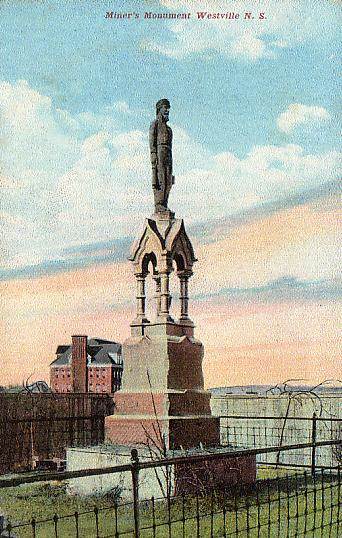
Westville Miners Monument, early 1900s.



